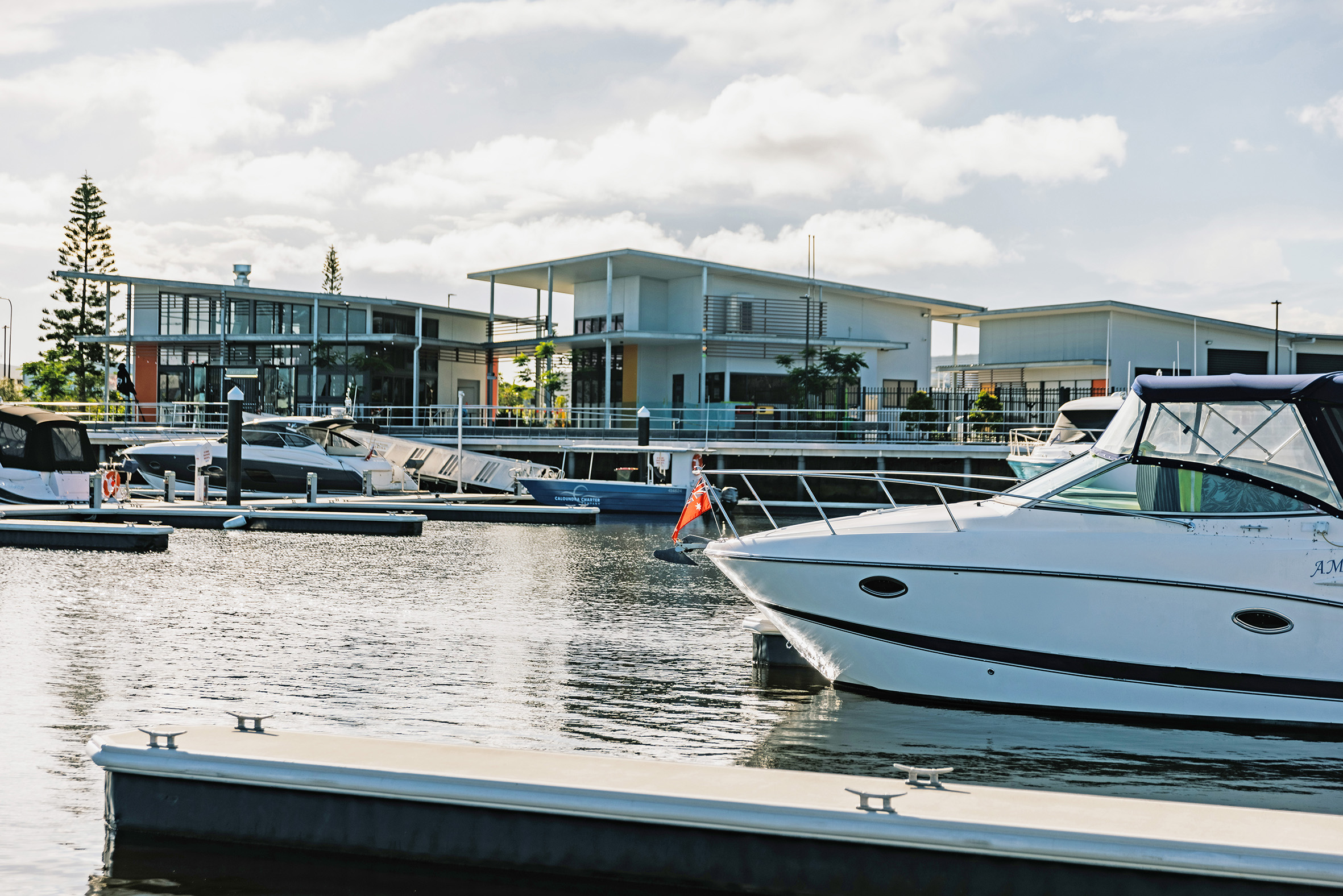
Whether you’re launching a fishing runabout for a morning adventure or maintaining a 16m cruiser, adopting a proactive maintenance approach is critical for keeping your craft safe, efficient, and seaworthy all year round. We spoke to Les Binkin, Director of Pelican Waters Marina, which is located near Caloundra on Queensland’s Sunshine Coast, and asked him to share his top maintenance tips to help keep your boat running smoothly.

Establish a maintenance calendar
“Don’t wait for things to go wrong,” says Binkin. “Create a calendar-based maintenance plan that matches your boat usage.” Monthly checks for high-use craft and annual yard maintenance for others are a good rule of thumb. Most marinas and boatyards can help with an annual maintenance plan through their customer management systems.
Flush and check your engine after each use
Essential in saltwater areas, flushing your engine with fresh water helps prevent salt build-up and corrosion. Pay attention to cooling water flow and any warning lights. If you keep your vessel at a dry storage facility, complementary engine flushes are often part of the service, as they are at Pelican Waters Marina.
Don’t ignore the prop and skeg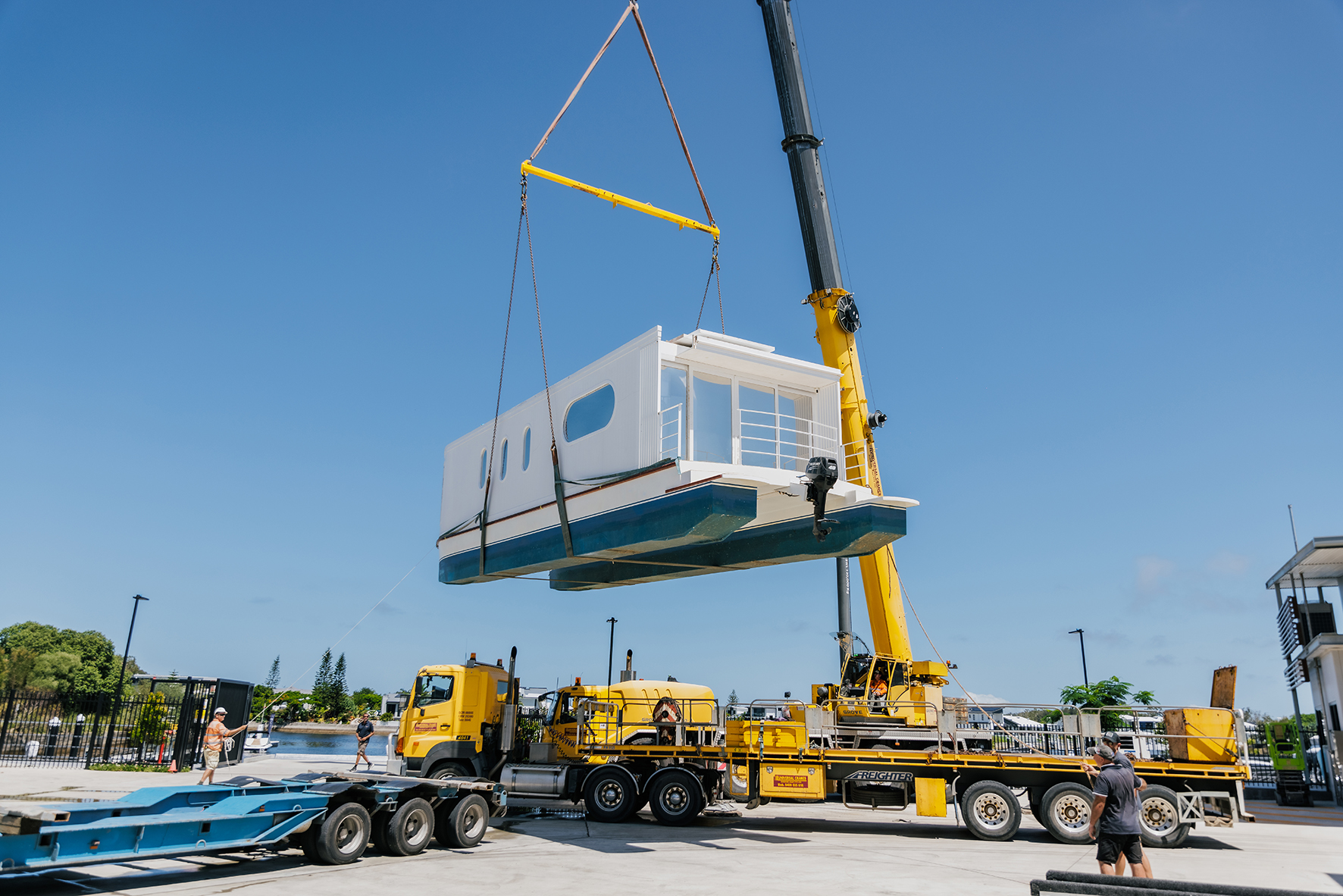
Always reference your chart plotter and keep an eye on the tide to prevent running aground. Binkin recommends a walkaround inspection after each trip. “Even minor prop damage affects efficiency and puts strain on your gearbox,” he says. “This simple inspection also allows you to identify other problems, like fishing line entanglement, which require attention.”
Battery maintenance is key
Heat, salt air and lack of use drain battery life. Keep terminals clean, monitor charge levels, and use a trickle charger during off periods. “We see a lot of dead batteries after boats sit idle for just a few weeks,” warns Binkin. Most marinas have power connected to the berths, and well-planned marinas have power capabilities for dry storage clients too, making battery charging a breeze.
Protect your boat with covers, shade and gelcoat care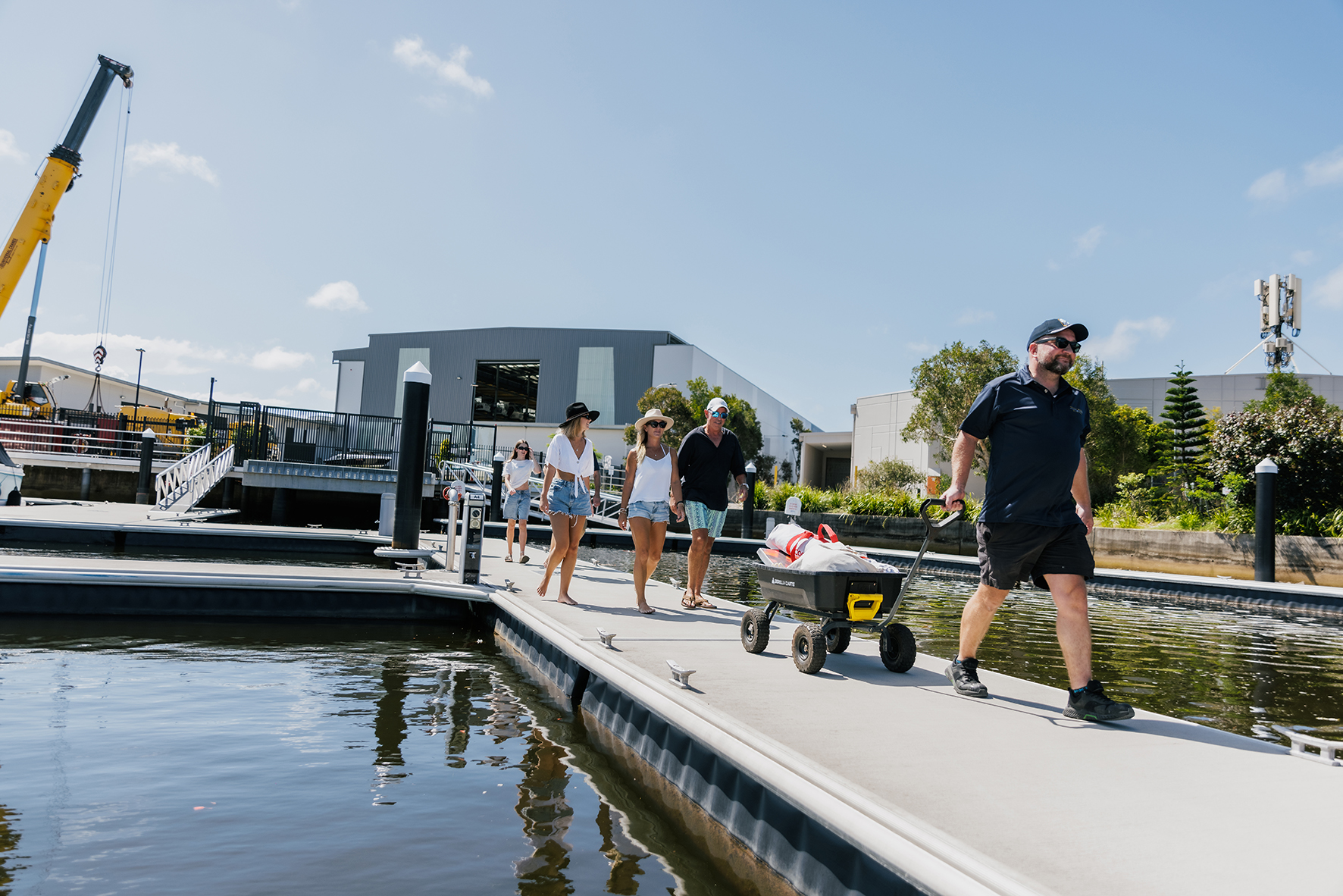
UV rays can be harsh across Australia and New Zealand. Use properly fitted covers and ensure clears and biminis are in good condition. This not only protects the exterior but also electronics and upholstery. To go a step further, Binkin recommends regular gelcoat polishing and protective coatings. “It’s not just about looking good,” he says. “A polished and protected surface creates a barrier against sun damage, salt, and oxidation – prolonging the life of your gelcoat and paintwork while maintaining the boat’s value.” A well-maintained finish also makes cleaning easier after each trip.
Consider drystack storage
Trailer issues can ruin a day on the water before it even begins. “Flat tyres, corroded brake lines, and seized bearings are more common than you’d think,” says Binkin. Rinse thoroughly after every saltwater launch, inspect tyres, lights, and brakes, and keep wheel bearings greased. Have your marine mechanic service the trailer yearly with your boat’s annual service. For owners of trailer boats and PWCs who are tired of ongoing trailer upkeep, drystack storage could be a good alternative.
“It protects your vessel from sun and salt exposure, eliminates ramp queues, and saves valuable time,” says Binkin. “Some enclosed dry storage sheds also add additional security.”
Inspect your bilge and pumps A dry, clean bilge is the first sign of a healthy boat. Test bilge pumps, inspect float switches, and clean out oil and debris. This helps you to spot leaks early and prevents harmful discharges into the marina.
Replace fuel filters and keep tanks topped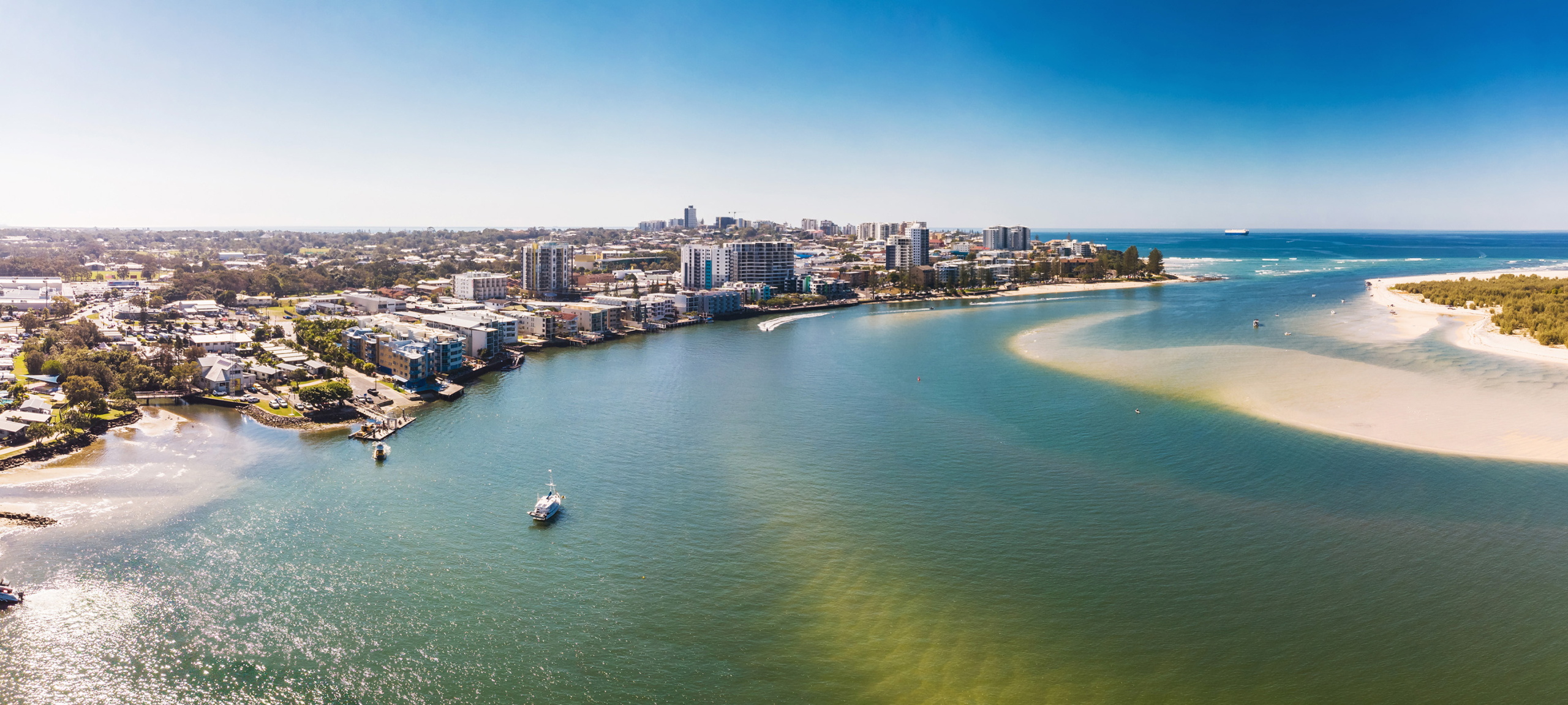
Condensation can lead to fuel being contaminated by water – especially when tanks sit partially full in fluctuating temps. “Keep tanks full and replace filters every 6–12 months,” advises Binkin.
Monitor and replace sacrificial anodes
Corrosion is a constant battle in salt water. Zinc or aluminium anodes help protect vital parts of your boat. “Check them regularly and replace them at least annually before they deplete completely,” says Binkin.
Schedule annual professional inspections
Even the most hands-on owners benefit from expert eyes. “A trained marine technician can spot issues you may overlook – especially in engines, electrical systems, and structural fittings,” says Binkin. All of your primary marine service technicians are usually based in a marina or boatyard, making it easy for an owner to get all of their annual maintenance and checks done in one location.
Don’t skip the annual antifoul
A fresh coat of antifoul paint is essential for moored vessels. “It prevents marine growth like barnacles and weed from attaching to the hull,” explains Binkin. “Without it, growth can reduce fuel efficiency, increase drag, and damage hull integrity.” In warmer waters, annual application is often necessary to stay ahead of biofouling and keep your boat performing at its best. This is the perfect time to replace anodes, service your running gear and recoat these while your vessel is out of the water.
Final word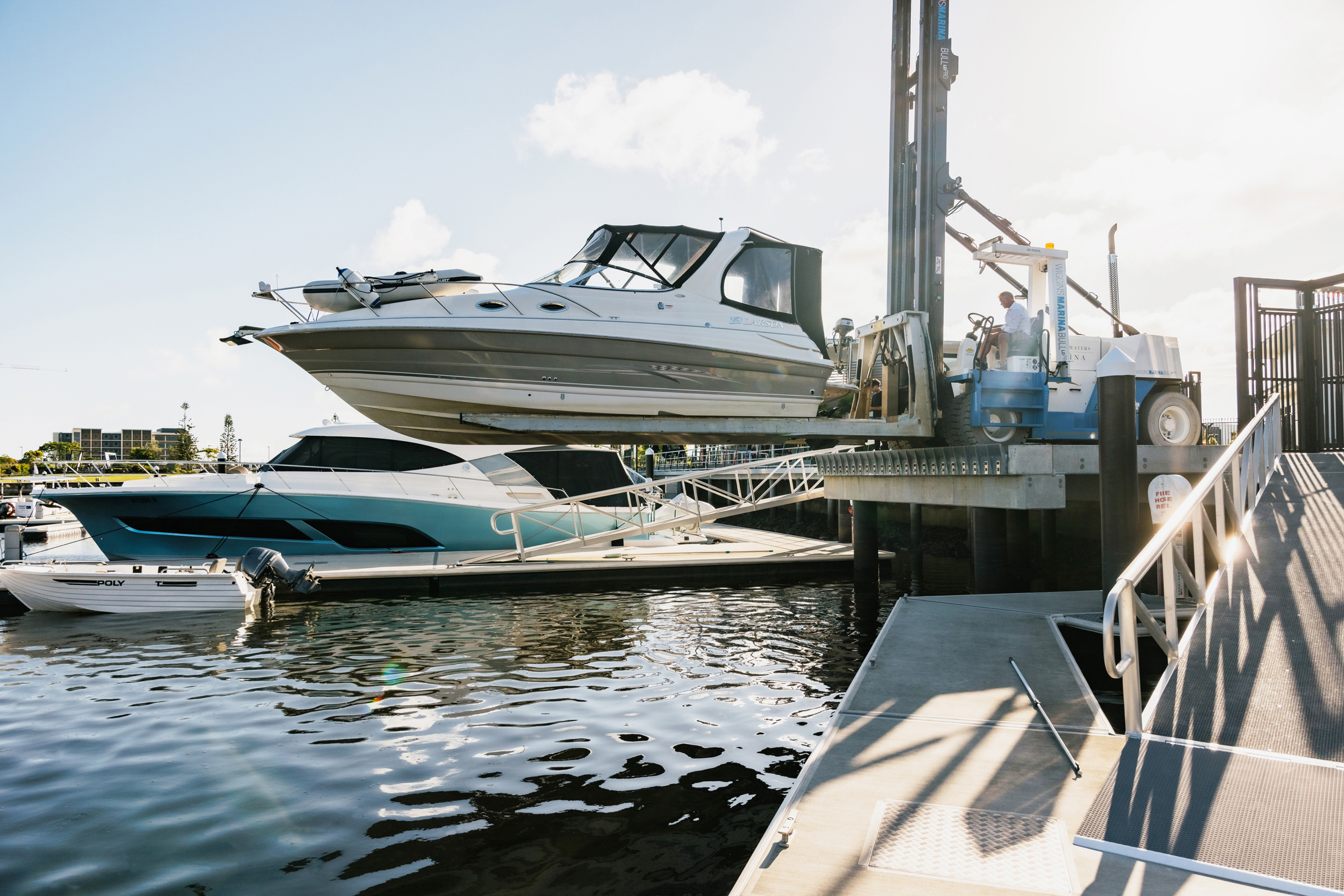
Routine professional maintenance isn’t just about prolonging your boat’s life – it’s about safeguarding your time on the water. “It can be the difference between a great weekend and a breakdown out in the bay,” says Binkin.
